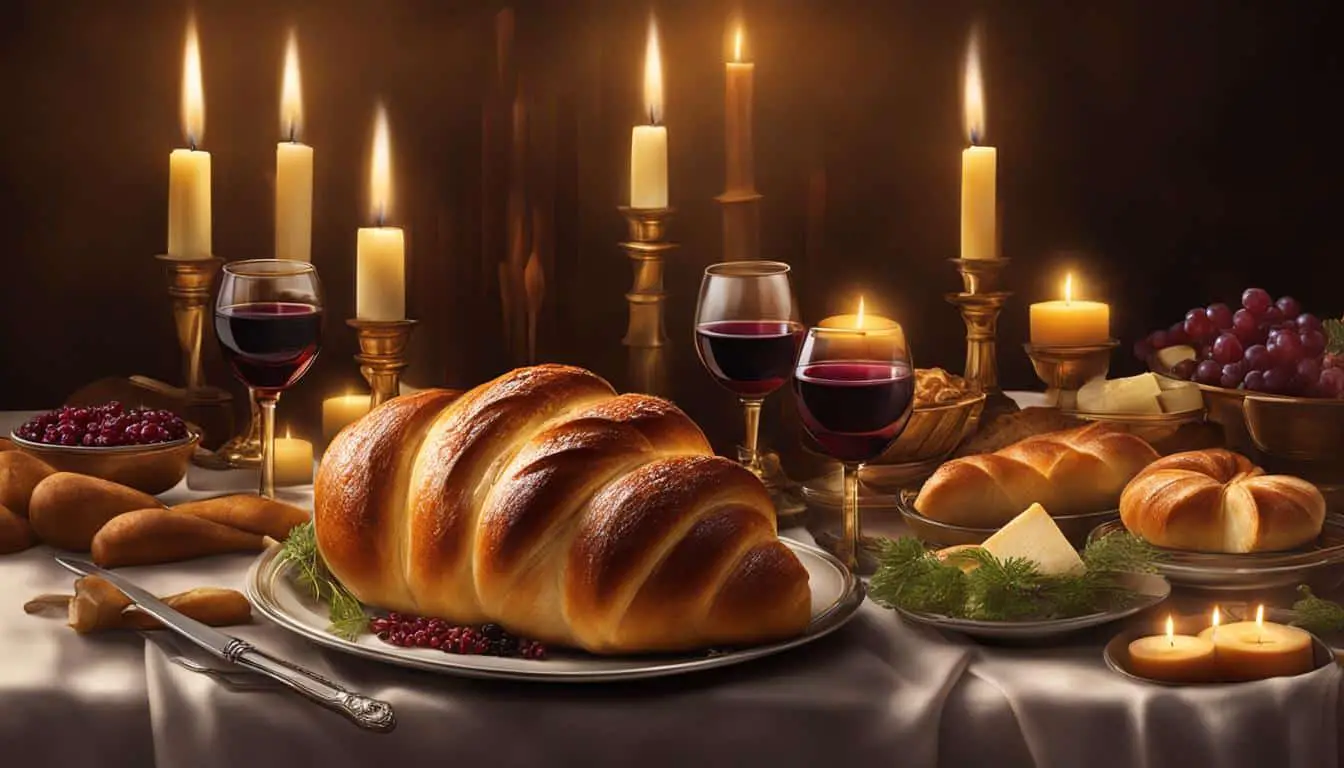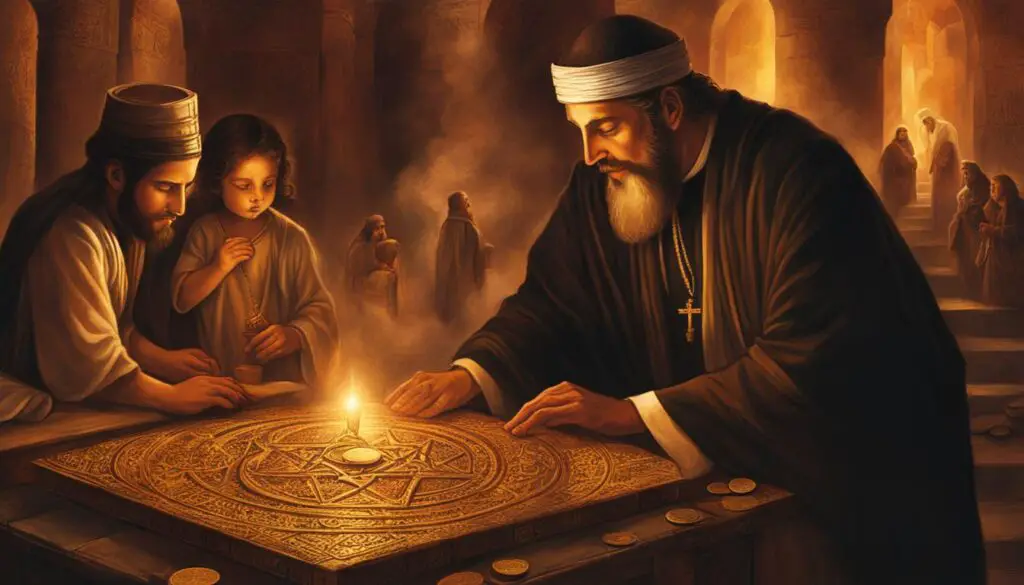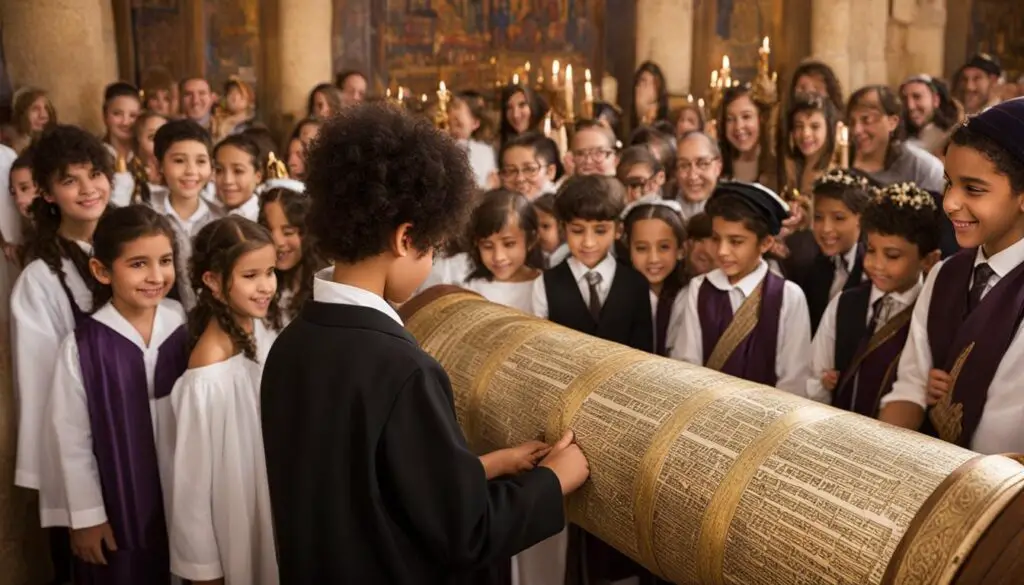
Exploring the rich tapestry of Jewish customs in the biblical context offers a fascinating glimpse into the traditions and practices that have shaped the Christian faith. These customs, deeply rooted in the ancient Jewish tradition, provide valuable insights into the historical and cultural background of the Bible.
From the redemption of the firstborn to the bar/bat mitzvah, each custom carries profound significance and sheds light on the religious practices that influenced the life of Jesus and his followers.
Key Takeaways:
- Jewish customs in the Bible provide valuable insights into the cultural and religious context of the biblical narrative.
- The redemption of the firstborn showcases the importance of firstborn sons and their role in the priesthood of the Jewish nation.
- The bar/bat mitzvah marks a significant coming-of-age moment in a young Jewish person’s life, emphasizing accountability and responsibility.
- Understanding these customs offers a deeper appreciation for the profound impact of Jewish traditions on the biblical world.
- Exploring Jewish customs in biblical context enriches our understanding of the foundations of the Christian faith.
The Redemption of the Firstborn (Pidyon ha’Ben)
The redemption of the firstborn is a significant Jewish custom with roots in biblical times. According to the book of Exodus, the Israelites were spared from the tenth plague in Egypt because they followed God’s commands. As a result, all firstborn sons (and animals) were considered to belong to God. However, with the establishment of the tribe of Levi, a special redemption ritual called pidyon ha’Ben was introduced. This ritual involved the father redeeming his firstborn son by offering five shekels of silver to a priest.
This custom, still practiced today, highlights the importance of firstborn sons and their role in the priesthood of the Jewish nation. It is a powerful symbol of consecration and dedication to God. The scriptural references to this custom can be found in Exodus 13:1-2 and Numbers 18:15-16, shedding light on the religious practices of ancient Jewish times. By exploring this custom, we gain a deeper understanding of the significance of the firstborn and their special status in the eyes of God and the Jewish community.
The redemption of the firstborn is not only a religious act but also a cultural and historical reminder of the Israelites’ deliverance from Egypt. It represents the ongoing connection between Jewish families and their ancestral roots, as well as their commitment to upholding the traditions and customs of their faith.
| Key Points: | Significance: |
|---|---|
| The firstborn belongs to God | Emphasizes consecration and dedication |
| Pidyon ha’Ben ritual | Redeeming the firstborn with silver |
| Scriptural references | Exodus 13:1-2, Numbers 18:15-16 |
This ancient Jewish custom provides us with insights into the religious practices of the time and the cultural traditions that shaped the lives of the Jewish people. It serves as a reminder of the ongoing connection between the past and the present, as well as the significance of honoring and preserving one’s heritage. By understanding the redemption of the firstborn, we can deepen our appreciation for the richness and complexity of ancient Jewish customs and their impact on the biblical narrative.

Bar/Bat Mitzvah: Ancient Jewish Coming-of-Age Ceremonies
The Bar/Bat Mitzvah is a significant rite of passage in the Jewish faith, marking the transition from childhood to adulthood. Rooted in ancient Jewish customs and traditions, this ceremony holds great religious and cultural importance. The Old Testament provides glimpses of the age of accountability and responsibility, which the Bar/Bat Mitzvah encapsulates. It is an occasion where young Jewish boys and girls, typically at the age of twelve and thirteen, respectively, publicly affirm their commitment to their faith and assume greater responsibility for their spiritual journey.
The Bar/Bat Mitzvah ceremony involves various rituals and traditions that have been followed for centuries. The centerpiece of the celebration is the reading and interpretation of a Torah portion by the young individual, demonstrating their understanding of Jewish teachings and their ability to participate actively in religious ceremonies. The ceremony takes place in the presence of family, friends, and the community, symbolizing the support and guidance that the young person will receive as they embrace their faith and mature into adulthood.
During the Bar/Bat Mitzvah, the young person may also deliver a speech reflecting on their personal journey, expressing gratitude to their parents and mentors, and sharing their aspirations for the future. This milestone event is often celebrated with joyous festivities, including a reception or a banquet, where family and friends come together to honor the young person’s achievements and offer their blessings for their continued growth in faith and character.
| Key Elements of a Bar/Bat Mitzvah | Symbolism |
|---|---|
| Reading and interpretation of a Torah portion | Signifies the young person’s commitment to studying and understanding Jewish teachings |
| Speech by the young person | Reflects on personal growth, expresses gratitude, and shares aspirations for the future |
| Community presence | Represents the support and guidance provided by family, friends, and the wider Jewish community |
| Reception or banquet | Celebrates the young person’s achievements and offers blessings for their continued journey |
The Bar/Bat Mitzvah is a poignant and transformative moment in a young person’s life, affirming their connection to their faith, community, and heritage. It serves as a reminder of the rich tapestry of Jewish traditions and their enduring significance in both ancient and contemporary contexts.

Conclusion
Understanding Jewish rituals in biblical times is key to gaining insight into ancient Jewish traditions and religious practices. These customs, deeply rooted in the Bible, shed light on the cultural context of the Scriptures and the foundations of the Christian faith.
Exploring these ancient Jewish rituals allows us to appreciate the profound impact they had on the biblical narrative. From the redemption of the firstborn to the bar/bat mitzvah, these traditions offer a window into the rich history and complexity of the biblical world.
By delving into these customs, we can grasp the beauty and significance of Jewish religious practices. The rituals observed by Jesus and his followers provide invaluable insights, enhancing our understanding of the cultural and religious framework of the New Testament.
As we deepen our appreciation for these ancient Jewish traditions in the Bible, we are better equipped to connect with the profound heritage of the Jewish people and the enduring legacy of their rituals in shaping the Christian faith.
FAQ
What is the significance of Jewish customs in understanding the biblical context of the Christian faith?
Jewish customs, often referred to as “biblical” customs, provide valuable insights into the meaning of the Word of God and the Jewish background of the New Testament. They help us understand the religious practices that shaped the life of Jesus and his followers.
What is the redemption of the firstborn in Jewish customs?
The redemption of the firstborn is a significant Jewish custom with roots in biblical times. It originated from the Israelites being spared from the tenth plague in Egypt, as they followed God’s commands. All firstborn sons (and animals) were considered to belong to God, but with the establishment of the tribe of Levi, a redemption ritual called pidyon ha’Ben was introduced. This involved the father redeeming his firstborn son by offering five shekels of silver to a priest.
How does the bar/bat mitzvah relate to Jewish customs?
The bar/bat mitzvah is another significant Jewish custom that celebrates the coming-of-age of a Jewish child. It typically occurs at the age of twelve for boys and thirteen for girls. While the exact origins are unclear, references in the Hebrew Scriptures suggest an age of accountability and responsibility. The New Testament provides an account of Jesus’ bar mitzvah, where he amazed rabbis with his wisdom. This custom signifies a young person’s increased responsibility for their faith and adherence to Jewish laws and traditions.
What insights can we gain by exploring Jewish customs in biblical context?
Exploring Jewish customs provides a unique perspective on the Scriptures and the foundations of the Christian faith. These customs, rooted in ancient Jewish traditions and observed by Jesus and his followers, offer insights into the cultural and religious context of the biblical narrative. By understanding and appreciating these customs, we can gain a deeper appreciation for the rich history and profound impact of Jewish traditions on the biblical world.








